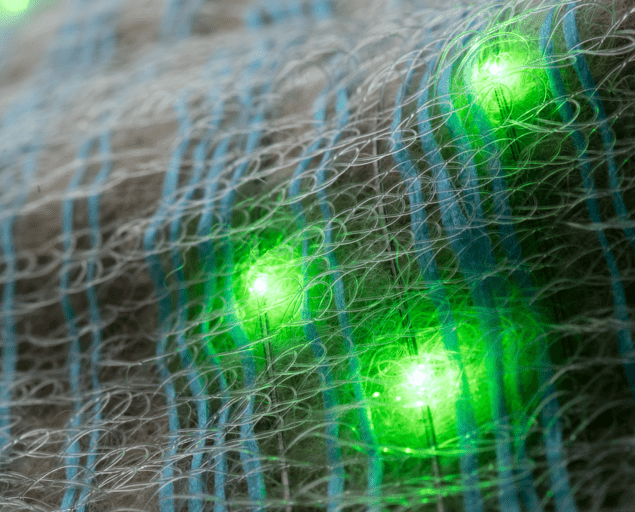
Smart clothes, where electronics are incorporated into fabrics, have long been touted as the next big thing. From yoga pants that gently vibrate to give you instruction on how to move, to a jacket with woven-in touch sensors that control a phone, there have been many attempts to bring smart clothing into the mainstream. But so far, consumers have been largely indifferent to these garments. Alongside high cost, an important barrier to commercial success is that smart clothing still relies on either integrating conventional electronics onto fabrics – meaning they have to be removed when the garment is washed – or combining insulating and conducting fibres in basic ways that offer limited functionality.
We’re getting the function into the fabric itself
Yoel Fink
Now, researchers led by Yoel Fink at the Massachusetts Institute of Technology in the US have developed a new scalable process to manufacture fibres incorporating the three basic ingredients of electronics – conductors, insulators and semiconductors. “We’re getting the function into the fabric itself,” explains Fink. “For the first time in history, we can credibly say that the function of fibres and fabrics is going to accelerate in the years ahead.”
Downsizing
The process is inspired by a technique used to make optical fibres. Standard optical fibres are manufactured from a larger-diameter “preform”, which is heated and pulled out to make a thinner fibre. Similarly, the Fink and colleagues engineered a preform that included discrete semiconductor diodes – LEDs or photodetectors – alongside hollow channels through which conducting copper or tungsten wires could be fed. The materials were selected to all flow when heated to a specific temperature and therefore could be pulled out to create a slender fibre.
During the pulling process, wires move closer to the diodes until they made electrical contact. This creates hundreds of diodes connected in parallel. The next step is to weave the LED and photodetector fibres into polyester fabrics using a conventional industrial loom.
Though this pulling process has been used in previous studies to bring materials with disparate electronic and optical properties together, the performance of earlier materials was lacking. In contrast, not only does the new study demonstrate excellent electrical performance through the incorporation of highly conducting tungsten or copper, but it is also the first example of a fibre with embedded semiconductor devices capable of emitting light when supplied with current.
T-shirt conversation
To highlight the potential of the new fibres, the researchers subjected them to 10 machine wash cycles, finding that they maintained their performance throughout.
They then created several garments to show how the fabrics could be used. One demonstration involved embedding a cotton sock with an LED fibre and an adjacent photodetecting fibre, and then placing an index finger over both. The change in the light reflectance from the skin caused by volume changes in small blood vessels — which expand and contract with every heartbeat — was recorded by the photodetecting fibre – transforming the sock into a heart rate monitor.
The researchers also made two garments containing both light-emitting and photodetecting fibres, and placed them 1 m from each other. They then modulated the light-emitting fibres in one garment to transmit information being recorded by the photodetecting fibres in the other garment, forming a bi-directional communication system.
“Moore’s law for fibres”
Describing their work in Nature, the researchers say that a raft of other functional fabrics could be made from the fibres. These include active textiles that can release fragrances or drugs and medical neuron fibre probes. Yet Fink is certain these applications are just the tip of the iceberg. “We use the term ‘Moore’s law for fibres’ to suggest that this is not the end of the story it’s just the beginning,” he says.
Fink’s confidence stems from his commitment to bringing materials out from the lab and into the real world as fast as possible. Through his non-profit organization Advanced Functional Fabrics of America (AFFOA) he has already progressed beyond results described in Nature: “Even during the time it has taken for this publication to come out we’ve transitioned this to thousands of metres a week of production,” he explains. “We want to deliver services and value through fabrics, as opposed to just warmth and comfort and aesthetics, and in a short period of time instead of decades.”
Walter Margulis of RISE Acreo in Sweden – who was not involved in the research – thinks the research will have a broad impact: “I think this paper is just a small piece in the big puzzle of revitalising a US industry that is finding it hard to compete with low-cost countries like Bangladesh or India,” he suggests. “But adding functionality to fabrics is very significant and could impact on all our lives – maybe we’ll all be wearing these fabrics in the future.”


